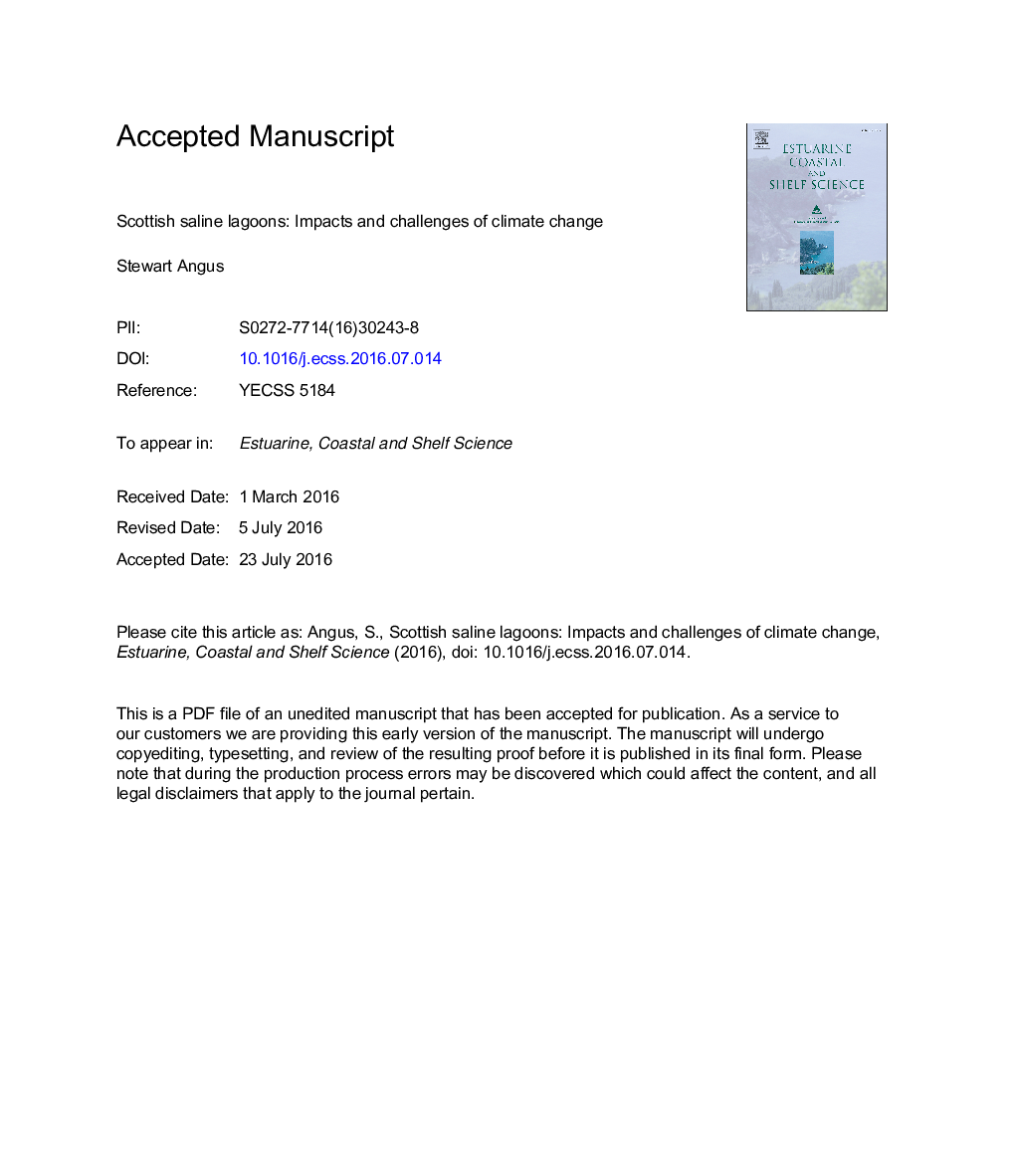| Article ID | Journal | Published Year | Pages | File Type |
|---|---|---|---|---|
| 8885211 | Estuarine, Coastal and Shelf Science | 2017 | 25 Pages |
Abstract
The majority of Scotland's saline lagoons are located on the low-lying coastlines of the Western Isles and the northern archipelagos of Orkney and Shetland, where recorded annual relative sea level rise rates are among the highest in Scotland. The sediment-impounded lagoons of Orkney and Shetland will either lose their impoundment and become incorporated in marine coastal waters, or become increasingly saline, as relative sea levels rise. The rock-basin lagoons of the Western Isles will retain their restricted exchange with the sea but will also become more saline with rising sea level. Specialist lagoonal organisms tend to have wide salinity tolerances but may succumb to competition from marine counterparts. In all areas, there are sufficient fresh-water inland water bodies with potential to be captured as lagoons to compensate for loss of extent and number, but the specialist lagoon biota tend to have limited dispersal powers. It is thus possible that they will be unable to transfer to their analogue sites before existing lagoons become fully marine, giving conservation managers the problem of deciding on management options: leave natural processes to operate without interference, manage the saline inflow to maintain the current salinity regime, or translocate lagoon organisms perceived as threatened by rising salinities. Timing of conversion and capture is unpredictable due to local topography and complications caused by variable stratification.
Related Topics
Physical Sciences and Engineering
Earth and Planetary Sciences
Geology
Authors
Stewart Angus,
